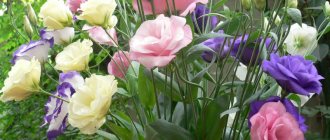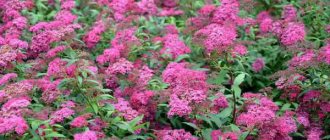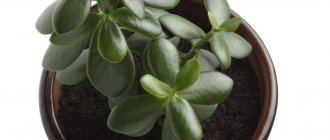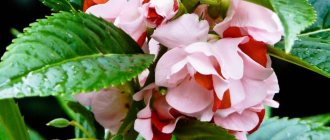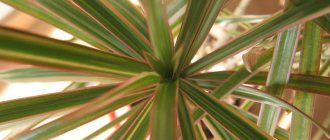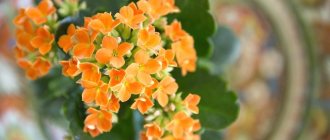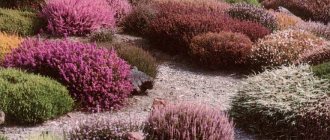- July 30, 2019
- Houseplants
- Elena Erokhina
Indoor bamboo is a miniature ornamental plant belonging to the genus Dracaena. It can have a spiral or even trunk, at the top of which there are hard, bright green, elongated leaves. The plant blooms rarely, throwing out an arrow with white flowers. Let's learn how to care for decorative bamboo to prevent its death.
Functional purpose
Bamboo undoubtedly has the task of decorating a room. It looks good both in apartments and offices. Vessels with it are placed in hotels, restaurants and photo studios. People who are passionate about this plant are able to change its shape so much that everyone, from small children to executives of large companies, will like the result. The bamboo trunk can be grown straight, or it can be artificially curled and made into a spiral shape. This approach helps to decorate the room, make the interior unforgettable, and make it suitable for a conversation or photo shoot.
What is known about the plant
In fact, how to grow indoor bamboo can be understood by determining its type. It really looks like a miniature copy of the tropical plant of the same name. That is why scientists debated for a long time what species to classify it as. It was recognized either as a bamboo or as an agave, but in the end it was classified as a dracaenaceae, giving the name Dracaena sanderian. In nature, this plant can be found in Africa, Southeast Asia and South America. Translated, the word “dracaena” means “female dragon.” However, according to the teachings of Feng Shui, the plant is considered positive and helps to achieve success in life.
If you come across a spiral-shaped plant, know that this is the result of special cultivation, when the still thin and young stem is placed in a special flask, which is removed after twisting.
Natural conditions allow the bamboo to grow perfectly straight with beautiful little leaves at the top. The average person can try to twist the trunk, guiding it around a decorative post. This manipulation can only be done with young shoots before they become woody. Over time, the stem forms buds that look like constrictions.
Indoors, dracaena can grow up to one meter. Moreover, as soon as it overcomes the threshold of 50 cm, it is recommended to transplant it into a larger pot and move it from the windowsill to the floor.
Indoor bamboo (Dracaena Sandera)
Indoor bamboo appeared in our homes relatively recently, but immediately gained popularity among amateur gardeners, and especially beginners. Homemade bamboo is very simple, and even a child can be trusted to care for it.
A little about indoor bamboo
In fact, what we call domestic bamboo has nothing to do with this plant. All these intricate spirals and knotty sticks with leaves are one of the varieties of dracaena. And she bears the name Dracaena sanderiana. It is called bamboo because of the knotty stems characteristic of bamboo. Moreover, this dracaena was previously classified as a member of the bamboo subfamily, then it was moved to the agave family, and now it occupies a place among the dracaenas. But among the people, Dracaena Sandera has remained an indoor bamboo. It is often called “Happiness Bamboo” or “Lucky Bamboo”.
The nodes on the stem of the plant, which give Dracaena Sander its resemblance to bamboo, are actually kind of buds from which new shoots develop. You can become the owner of indoor bamboo quite by accident. The fact is that this plant is very loved by bouquet makers. Over time, the flowers of such a bouquet inevitably fade, and indoor bamboo, being in water, on the contrary, begins to acquire roots and awaken to a new life. This is another advantage of Dracaena Sander over other indoor plants. After all, it can be kept simply in a vessel with water, it can be placed in a hydrogel or planted in the ground. Its plasticity is also attractive. Young indoor bamboo easily curls into a spiral, the stems intertwine with each other, which allows you to give the plant the most bizarre shapes.
Indoor bamboo is widespread among Feng Shui lovers. It is believed that it brings happiness, prosperity, love, prosperity and many other benefits to the house. In China, the number of stems of the Lucky Bamboo has a certain meaning. For example, three stems attract happiness, five - material well-being, seven - health. Twenty stems are called the “Tower of Happiness” and are given to the most dear people. And in Japan, indoor bamboo is considered a symbol of strong character, courage and is a good gift for men.
What does it look like
There are two types of indoor bamboo:
- Medium heights originate from Japanese ancestors. They can reach four meters in length and are grown in private homes with large areas and high ceilings. Such flowers tolerate heat well, but require a lot of light.
- Low-growing representatives are not taller than one and a half meters and can decorate both apartments and office spaces. They can withstand a minimum of light perfectly and will not die in a cool microclimate or in drafts.
The plant has a completely bare trunk, which either grows straight or bends in a spiral. Most often it is characterized by a green color, but there are also golden representatives of the genus. Also, the appearance will depend on the method of planting the indoor plant. Bamboo prefers unobtrusive care, but it will vary slightly in different environments. However, monitoring the presence of moisture in the pot is a prerequisite for a good result. Only the dracaena that receives enough liquid will be beautiful. Let's study what else is important for this plant.
Basic Rules
Despite the fact that the flower can be grown both in soil and in a liquid medium, experts say there is no special care at home. Indoor bamboo should be grown according to rules that do not depend on the environment and relate to:
- locations;
- lighting;
- temperature;
- humidity.
Exotic in the apartment
Indoor bamboo is in many ways an unusual and unusual plant for growing in an apartment. Its counterparts, which make up the tropical forests, reach a height of 35-40 meters. The ornamental variety grows much slower and is actually a species of dracaena known as Dracaena Sandera.
This plant is a dense ringed trunk with a lanceolate rosette of leaves at the crown. Particularly attractive is the ability to form fancy bends from the trunk; more often it is bent in the form of a spiral. You can see examples of such bamboo fantasies in the photo in our article. Indoor bamboo is a lush green, unpretentious guest, but it also requires some attention and proper care.
Growing space
Bamboo at home requires a certain place. If you follow the recommendations of plant growers, then it should be placed on the windowsill on the eastern part of the house. If you listen to the teachings of Feng Shui, then the location will depend on what goals you want to achieve. The rule of placing decorative bamboo in the east will help you find good luck in your personal life and a strong family. Bamboo on the south side of the house will bring recognition and glory to the owner. You can achieve financial well-being by placing the pot on the south-eastern windowsill.
Choosing a place for indoor bamboo
Western or eastern windows are an ideal place for bamboo. He prefers bright but diffuse lighting. If you place it in the northern part of the house, the bush will begin to lose foliage, and its growth will slow down.
In winter, the plant continues to develop and still needs sun. From late autumn to mid-spring you will need to additionally illuminate the bush. Otherwise, the shoots will stretch out and become thin, and the lower leaves will fall off.
Loves bamboo and warmth, all year round. It can tolerate summer heat without problems if there is enough moisture. But the temperature should not be allowed to drop below 13 °C.
Lighting
Experts call the next important stage in cultivation to provide partial shade to the indoor bamboo plant. In care, it is important to prevent direct sunlight on the leaves, which will lead to the death of the flower. However, dracaena needs light, which affects its color and growth. This is why it is not recommended to completely shade the window. A lack of light can lead not only to damage to the appearance of the plant, namely to yellowing of the leaves and changes in shape, but also completely destroy the plant.
Bamboo in the house: signs, superstitions and Feng Shui
All signs associated with bamboo in the house are exclusively positive. A persistent, hardy plant has a beneficial effect on human life. It is given and accepted as a gift with the desire to improve well-being, attract good luck, and harmonize all life processes. According to legend, each section of bamboo is responsible for a certain stage in life.
A plant with powerful energy can either improve or worsen the situation in the house, so you should know the rules for its location. By placing the “tree of happiness” in a certain place in the house, you can adjust the necessary areas of life. According to the Chinese teachings of Feng Shui, the number of stems is of great importance. They have the following effects:
- 2 stems - a symbol of love and a strong marriage;
- 3 – family well-being, happiness;
- 4 – a symbol of death, you cannot keep such compositions at home and present them to friends;
- 5 – wealth, financial success;
- 7 – improvement of well-being, strengthening of health;
- 8 – success in any endeavor;
- 9 – successful job, career growth;
- 20 – “Tower of Love” will strengthen friendship, renew love, warm family relationships.
Temperature
As for the climate, at home, bamboo requires maintaining a temperature in the range from +18 to + 25 °C. A slight increase in this important parameter for the plant is also allowed. An increase in the indicator by 3-5 degrees will not cause any significant changes in the growth and development of dracaena.
It should be noted that for short-sized representatives, a temperature approaching the lower limit is preferable, and for medium-sized representatives, it is better to maintain the upper limit.
Humidity
Of course, the water-dwelling houseplant bamboo does not need additional watering. He just needs weekly fluid changes. However, both aquatic and soil-growing specimens do well after wiping their leaves with a damp cloth or after a short warm shower. It should be noted that bamboo should not be left near heating devices. Dry air will have a detrimental effect on dracaena.
A plant planted in the ground requires watering once every three days. Based on environmental conditions, in winter the humidity in the room should be 35%, and in summer - not lower than 50%.
It must be remembered that bamboo will feel good if you water it not with tap water, but with settled, thawed or distilled water.
Conditions for keeping the plant
It is very easy to create comfortable living conditions for bamboo. Houseplants need good lighting and fresh air. The shoots receive nutrition through the root system, so systematic watering and fertilizing are important. Depending on the type of planting (soil or water), certain care rules apply.
Lighting and location
Indoor bamboo does not tolerate direct sunlight. The place must be chosen to be bright, but with dosed penetration of ultraviolet radiation. Darkening in the midday heat can be achieved with the help of a curtain. In regions with prevailing cloudy weather, during periods of decreasing daylight hours, plants can be artificially illuminated with special lamps. Lack of light affects the appearance of greenery - the foliage falls off, the trunk turns yellow, and growth slows down sharply.
It is better to place a pot of bamboo on a western or eastern window sill. It should not be allowed to overcool, so in winter it is better to move the container to the center of the room and carefully ventilate it.
Air temperature and humidity
As the seasons change, the temperature preferences of indoor bamboo change. Elevated values for it are equally destructive as low ones. To maintain a good humidity regime, the temperature in summer should not exceed 35 °C, in winter – 15 °C. If the room is very hot, the pot with the plant should be temporarily moved to a room without windows (hallway, bathroom). Optimal temperature indicators are 25-30 °C.
Humidity is not very important for plant development. But since dracaena is a tropical plant, too dry air can harm it. You should not use a spray bottle to spray the foliage; oversaturation with liquid will lead to rotting of the stem. If the air is warm and dry, you can place a plate of water next to the bamboo. Regularly wiping the leaves with a damp cloth will do more good than watering on a hot day.
Interesting information
Despite the fact that the plant has little in common with its counterparts of the same name, it is nicknamed the bamboo of happiness.
Legend has it that a long time ago, an ordinary warrior fell in love with the daughter of a priest. The beloved's father did not want to give her to a commoner, so he came up with an unusual test. The young man had to grow a flower from a dry stick that the priest stuck into the ground in five days. The young man's love was so strong that caring for the piece of wood and hoping for the best turned the stick into a plant with green leaves.
Nowadays, according to the teachings of Feng Shui, indoor bamboo can ensure the growth and development of the owner’s potential in various sectors of life. We have already learned how the location of a flower affects success and career when we were choosing which windowsill to place it on. Now let’s look at what other rules to follow to ensure prosperity.
It is known that the owner of the plant will find happiness if he endures all the subtleties of planting, because bamboo symbolizes the harmony of five important elements:
- According to Feng Shui, the symbol of a tree is a trunk.
- The soil in which the lucky bamboo is planted symbolizes the earth.
- Without water, as the main element of harmony and vitality, the plant will die.
- To get what you want, you should tie the trunks with red ribbons, which in Feng Shui mean fire.
- Metal is another element for success, so experts recommend putting a couple of coins in a pot or tying them to ribbons.
Types and varieties
Garden bamboos can be roughly divided into low herbaceous plants and straight-trunked types with a rigid stem. When choosing a plant type for a garden, such a characteristic as frost resistance is very important, because bamboos are plants from the tropics and subtropics. The most frost-resistant of the Bamboo subfamily are plants of the Saza genus. Fargesia (or synarundinaria) are also distinguished by their hardiness and cold resistance. Bamboos of the genus Pleioblastus are attractive due to their high decorative value, and in more southern regions phyllostachys bamboos do well. Of the plants of the genus Bamboo, the most popular species in gardening is common bamboo. By the way, indoor bamboo , or decorative bamboo, has nothing to do with bamboos: Sandler's dracaena is hidden under these names.
Sasa
- a genus of the Bamboo subfamily, which includes about 70 plant species from Central and East Asia. Plants of the Saza genus form dense thickets on the edges or under the canopy of tall trees. On stems 30 to 250 cm high there are broad oval leaves, bright green in spring and summer, and drying out at the edges in autumn, creating a variegated effect. The most popular cultivated plants of this genus are:
- Sasa Kuril is a bamboo with a height of 25 to 250 cm with stems about 6 mm thick and ovate-pointed leaves up to 13 cm long and up to 2.5 cm wide. This bamboo blooms only once, after which it dies. The Kuril saz develops slowly; only its low-growing forms, which are used for Japanese gardens or as a ground cover plant, take root well in the middle zone. The Shimofuri variety with yellow streaks on green leaves is popular.
In addition to Kuril saz, in cultivation you can sometimes find saz Vicha, spikelet, golden, paniculate, palmate (Nebulosa variety with palm leaves), reticulated and branched.
Fargesia
- mountain Chinese bamboo, discovered in the 80s of the 19th century by French missionaries. Today there are about 40 species of these evergreen plants with a height of 50 cm, forming loose bushes with many shoots, covered with bright green graceful lanceolate leaves up to 10 cm long and up to 1.5 cm wide, which acquire a yellow-green color by autumn. The most common cultivated plants of this genus are:
- shiny fargesia (Fargesia nitida = Sinarundinaria nitida) is a type of winter-hardy bamboo with bright, glossy, dark red-brown, almost black stems from 50 cm to 2 m high. The leaves of shiny fargesia are narrow-lanceolate, up to 12 cm long. The Eisenach variety is popular with dark green small leaves, tall McClue variety, New Collection variety with purple-cherry stems, Great Wall - a variety with dark green leaves for tall hedges and Nymphenburg - a variety with narrow leaves on arched branches;
- Fargesia Murielae (Fargesia murielae = Sinarundinaria Murielae) is a species of frost-resistant bamboos native to Central China. The stems of plants of this species are yellow-green, smoothly curving, with a waxy coating. The leaves are long-pointed, pointed, bristly. Fargesia Murieli blooms once every century and dies after flowering. The last time flowering began was in the late 70s of the last century and lasted 20 years! Currently popular varieties of Fargesia Murieli are: Simba (a new Danish compact variety), Jumbo (a bushy bamboo with delicate green leaves) and Bimbo (the smallest variety with yellow-green leaves).
In addition to those described, Fargesia angioedema and Jiuzhaigou are also grown in culture.
Phyllostachys
– this genus of the Bamboo subfamily includes 36 species of plants with cylindrical flattened or grooved stems of green, yellow, black or bluish color with relatively short internodes, creeping rhizomes and green leaves. These bamboos reach a height of 3.5-5.5 m. The most famous cultivated species of the genus are:
- golden-grooved phyllostachys (Phyllostachys aureosulcata), growing up to 10 m in height with a stem diameter of 2 to 5 cm. This plant has dark purple, very convex nodes and golden-yellow grooves. The most commonly grown varieties are Spectabilis (an unusually beautiful plant with zigzag canes, awarded an RHS prize) and Areocaulis, also an award-winning variety with golden stems;
- black phyllostachys (Phyllostachys nigra) is a plant up to 7 m high, the stems of which become almost black in color from the second year of life. The leaves of the plant are small and dark green in color. Most often, the species is cultivated in its homeland - Japan and China. Popular varieties are Boryana - a plant up to 4.5 m high, the stems of which become spotted in the sun, and Hemonis - a plant up to 9 m high with green stems;
- edible phyllostachys, or moso (Phyllostachys edulis = Bambusa moso) from southeastern China. This is the largest species of the genus, whose strongly ridged stems with smooth nodes reach a height of 20 m. The tortoiseshell form of this species with an alternating oblique arrangement of nodes, which can be found in Sukhumi, Batumi and Sochi, is interesting for its ugliness.
Phyllostachys sweet, Simpson's, pubescent, Meyer's, soft, flexible, green-blue, reticulated (aka bamboo) and golden are also grown in the gardens.
Pleioblastus
- a genus of long-rhizome, low-growing bamboos, which includes 20 species native to Japan and China. Some of these plants are frost-resistant, which allows them to be grown as a garden crop in the middle zone. Bamboo of this genus is shade-tolerant, but variegated varieties are best grown in sunny areas. The best plants for gardens are:
- Simon's pleioblastus (Pleioblastus simonii) - this species reaches a height of 8 m in nature. It has straight, highly branched stems with internodes up to 45 cm long, convex nodes and lanceolate leaves from 8 to 30 cm long. Unfortunately, Simon's pleioblastus does not grow in the middle zone higher than 50-60 cm, but it is decorative due to dense bushes with well-leafed shoots. The variegated form of Variegata has bright green leaves decorated with cream stripes of varying thickness;
- variegated pleioblastus (Pleioblastus variegatus) is found in cultivation in the Caucasus: in Batumi, Sukhumi and Sochi. It reaches a height of 30 to 90 cm, it has thin, geniculate stems with short internodes and slightly pubescent green leaves with a white stripe, highly decorative. In frosty winters, this species sometimes loses its foliage, but recovers very quickly in the spring. Pleioblastus variegated develops quickly, forming wide bushes.
Narrow-leaved, low, dwarf, cereal, green-striped, double-rowed, Ginza, Shin and Fortune pleioblastuses grow well in culture, but they are not yet common.
Among other representatives of the Bamboo subfamily, some species of Indocalamus and Shibata are cultivated in the southern regions. As for the genus Bamboo, in garden culture it is represented by the species common bamboo.
Common bamboo (Bambusa vulgaris)
is a herbaceous deciduous plant with woody, densely leafy, bright yellow, rigid stems with green stripes and thick walls. Bamboo stems reach a height of 10-20 m, the thickness of the stems is from 4 to 10 cm, and the length of the knees is from 20 to 45 cm. The leaves are bright green, spear-shaped, and pubescent. Common bamboo rarely blooms and does not produce seeds, so the plant is usually propagated by dividing bushes, layering, shoots and rhizomes. The species has three varieties: green-trunked, golden (yellow-trunked) and variegated (a three-meter plant with knees about 10 cm long). The most famous varieties of this species include:
- striata - not as large as the main species, a plant with bright yellow constrictions between the knees and long dark green and light green spots randomly located on the trunks;
- vamin is a medium-sized plant with thickened and flattened lower constrictions, giving the bamboo an unusual appearance;
- vittata - a common cultivated variety up to 12 m high with numerous barcode-like stripes on the trunk;
- maculata - a variety with green trunks covered with black speckles and streaks. With age, the trunks of the plant turn black completely;
- Vamin striata - the plant reaches a height of no more than 5 m. It has a light green trunk with dark green stripes and enlarged lower bridges;
- aureovariegata - this widespread cultivated variety has thin golden stems with green stripes;
- Kimmei - a variety with yellow trunks with green stripes.
What influences home care?
Indoor bamboo, as it turned out, is unpretentious. However, its favorable existence and care depend on the environment in which it grows. Plant the plant in soil, water and hydrogel.
If you plan to place the dracaena in the ground, then the size of the root system will have a special impact, which will depend on the chosen pot. The smaller the vessel, the shorter the trunk and roots. Owners who want to have a miniature plant must replant it every three years, completely changing the earthen cushion.
In general, the soil requirements for indoor bamboo are not particularly strict. However, it is necessary to ensure airtightness through good drainage. Watering in this case should be moderate.
Since the plant comes from the tropics, you can purchase mixtures for dracaenas, palm trees or ferns at any retail outlet. The substrate must contain the following components: vermicompost, sphangum moss, sapropel and lowland peat. You can determine whether the soil is suitable for you by its color and consistency. It should be dark and quite loose.
If you can’t buy soil in a store, you can experiment. Some prepare the substrate themselves. To do this, you need to take two parts of chernozem or the same amount of a mixture of clay soil and sand. Add one part of middle or lowland peat and one part of humus. If the mixture turns out crumbly and loose, then you can safely plant dracaena in it.
The desire to plant the plant in water is commendable and is welcomed by experts in the field of bamboo cultivation. Dracaena Sander, as it is also called thanks to the florist Frederik Sander, can grow well in a liquid medium. Before planting, wash and inspect all roots for damage. Then you need to place the plant in the selected container, sprinkle the roots with boiled pebbles or other decorative stones and fill with settled water, which should be changed once a week. A prerequisite is to monitor the liquid level. It should cover the bamboo roots at all times.
If the owner decides to grow dracaena in hydrogel, then the planting procedure is similar to the previous option. However, the pot must first be disinfected. First, we inspect the roots and cut off the rotten ones, if any are noticed. Then we move the plant into the selected vessel, pour in the hydrogel and pour in water. The liquid should be added once every few weeks. It must be either settled or distilled water.
Hydrogel has both its advantages and disadvantages. Among the advantages of using such a substance, it should be noted:
- rapid growth of dracaena;
- attractive appearance if the plant is planted in a glass vessel;
- the ability to place hydrogel granules in liquid fertilizer before use, which will have a good effect on the development of bamboo in the future.
Among the disadvantages, experts note the possible appearance of mold and the need to change the substance every two years.
Vessels for planting
The choice of pot for indoor bamboo will also depend on the growing method. If for the soil method you should purchase small, opaque containers with drainage holes, then for the other two it is better to choose a glass vessel. In any case, the container should be twice as large as the dracaena root system. However, keep in mind that it will still grow quickly. That is why when replanting a bush, and in the first three years this must be done every spring, you should take a pot slightly larger than the previous one.
Transfer
Replanting work is carried out with the arrival of spring warmth.
During transplantation, roots longer than 10 cm are shortened and treated with a growth stimulator. The culture is placed in a substrate or hydrogel.
Important! When planting in a container, the root system of the shrub should not come into contact with its walls.
Content in hydrogel
How does dracaena reproduce?
There are several options, the most popular of which is propagation of bamboo by cuttings. There are stem and apical methods. In the first option, the stem is cut lengthwise and placed in water. For better results, experts recommend adding a stimulant.
With apical propagation, more actions will have to be performed, but this method is used more often, since the percentage of grown bamboo is much higher.
To obtain a guaranteed result, the plant is propagated in the spring, when young shoots appear. They need to be separated from the trunk and planted in the ground. Rooting will happen quite quickly. To make the task easier, propagation can be combined with transplantation, which is carried out once every few years.
It should be taken into account that the root system of indoor bamboo develops at a high speed. That is why for cuttings the pot must be selected a little smaller than for adult plants, but it should not be tiny.
You can try such an unpopular method as propagation by knees. Some of them have thickenings. The stalk with the thickening should be separated and placed in water, which must be changed daily or at least monitored for freshness. When roots appear, the plant should be immediately planted in the soil.
Dracaena can be propagated by division. This method is used when transplanting, separating large stems with roots and planting them in a prepared pot.
Experts note that the plant will not reproduce by seeds. Even if you find them on sale, you will not be able to grow a bamboo indoor plant. Caring for its seeds, no matter how hard you try, is unlikely to lead to success. Waiting for shoots to emerge is in vain, and the shoots that emerge from the ground, if this happens, will certainly not look like dracaena.
Diseases
Like any living organism, this flower is subject to various kinds of ailments. What to do to make the dracaena feel good is a question that beginners ask. Every time a flower changes, you should carefully examine the problem that has arisen. The bamboo indoor plant will tell you how to care for it. Its appearance will indicate an illness. An unsuitable environment, incorrectly chosen fertilizing or lack of light will definitely affect the dracaena. We will find out further what to do to minimize the possibility of death.
Experts call the main problems:
- A fungus characterized by the appearance of dark spots. This disease is associated with excessive soil moisture. In order to prevent fungus, the plant should be watered strictly according to the schedule, and if darkening is noticed, it is necessary to treat the leaves with a fungicide and include frequent ventilation in the care until the signs of the disease disappear.
- The appearance of pests is accompanied by cobwebs and the formation of a sticky layer on the leaves. To get rid of aphids or spider mites, you need to wipe the flower with a soft, damp swab, remove the damaged parts of the plant, and spray the remaining parts with an insecticide.
- Leaf discoloration and slow growth may indicate a nutrient deficiency. In this case, it is usually noticeable that the bamboo trunk has turned yellow. Any flower shop will know what to do with a houseplant when such signs appear. A competent seller will definitely advise you on fertilizing and tell you how to use it.
- If the dracaena has completely stopped growing, this is associated with a lack of nutrients or a lack of light. It is necessary to rearrange the bamboo so that it is in partial shade, and if there is no improvement, then the flower needs to be fed. The lack of results forces owners to resort to extreme measures. In this case, you should pinch the top to activate the dormant buds. Then you will save the bush, and it will not only be reborn, but also become fluffier.
- Yellowing of the leaves is also possible due to direct sunlight, watering with hard water or being near a heating device. If you notice these factors, then you do not need to feed the plant. You should move the pot to partial shade and use distilled water.
- When the dracaena leaves begin to fall, you need to check the temperature of the room. You may have frozen the flower. Experts recommend adjusting the temperature in the room, providing the plant with a warm microclimate.
- White uniform spots on the leaves are most often a sign not of a plant disease, but of belonging to a different species. However, it is worth understanding that single spots or a white coating give reason to believe that the bush is in danger and needs to be saved.
Bamboo diseases and plant growing problems
Most often, a plant gets sick if it is not properly cared for.
- Formation of spots and rusty spots on the stems. The shoot is affected by a fungus. It is necessary to ensure sufficient supply of fresh air to the flower; to do this, constantly ventilate the room. Treat the shoot with fungicides.
- Flower damage by pests. Most often, mites and aphids cause damage to bamboo. If you see these unpleasant insects on a plant, remove the pest with a soft sponge. If there is visible damage to the Dracaena, remove the affected part and treat the entire bamboo with a special solution that will destroy the pests.
- Yellowness of shoots and leaves. It can be caused by direct sunlight hitting the flower or by using too hard water for watering. If the plant is grown in the ground, then yellowing of the shoot indicates its rotting due to excessive watering. This problem also occurs when Dracaena gets frostbite; you should not overcool the plant. Remove the yellowed shoot, check the care conditions and, if necessary, modify them.
- Bamboo stopped growing. Dracaena lacks sunlight or does not receive nutrients. You should monitor how much light the flower receives during the day, and also fertilize it with fertilizer containing the essential minerals necessary for rapid growth. Fertilizing should be done in moderation, since oversaturation of the soil can also negatively affect Dracaena Sander.
- The leaves fall off, curl, and become soft. The plant is frozen. It is necessary to increase the heating of the room.
- White pigmentation on leaves. Most likely, this is not a disease, but a feature of the type of your bamboo. If you are still worried, then study photos of plants that are relatives of your home flower; perhaps they all have the same spots.
Bamboo flower is a very unpretentious plant. With careful care, Dracaena Sandera grows quickly and delights with its bright color. If you are a lover of home flowers, do not ignore this plant.
Top dressing
Any person who wants to admire the beauty of indoor bamboo for a long time should understand that neither the water nor the hydrogel can contain any useful microelements. That is why it is important to monitor the condition of the dracaena and feed it not only periodically, but also as needed.
Fertilizer application is undoubtedly an important stage of care. The indoor bamboo plant requires feeding starting in spring. Typically, fertilizing once a month is sufficient. In summer, the frequency can be increased by feeding dracaena every two weeks and reducing the amount of nutrients recommended on the package by 2-3 times. Regardless of how indoor bamboo grows, universal mineral fertilizers are suitable for it. However, liquid fertilizers are preferable for dracaena in water. They are conveniently added to a liquid medium, where they easily spread to the entire rhizome.
Foliar fertilizers for dracaena also performed well. They can be used instead of root dressings, regardless of whether they contain organic or mineral components.
How to trim bamboo
The houseplant can be pruned once or twice a year. However, this is allowed to be done only after the dracaena has been thoroughly rooted. Pruning allows you to give the plant any shape, which is very popular with lovers of these flowers.
The process consists of three stages:
- Remove unnecessary stems located close to soil, hydrogel or water.
- They fasten the trunk at a certain height and cut off all shoots above this point to stop upward growth.
- Old and newly released shoots are pruned to give the required shape.
All parts of the trunk that you removed from the main plant can be replanted to create new bushes. Cuts on mature bamboo should be covered with liquid wax to prevent rotting.


